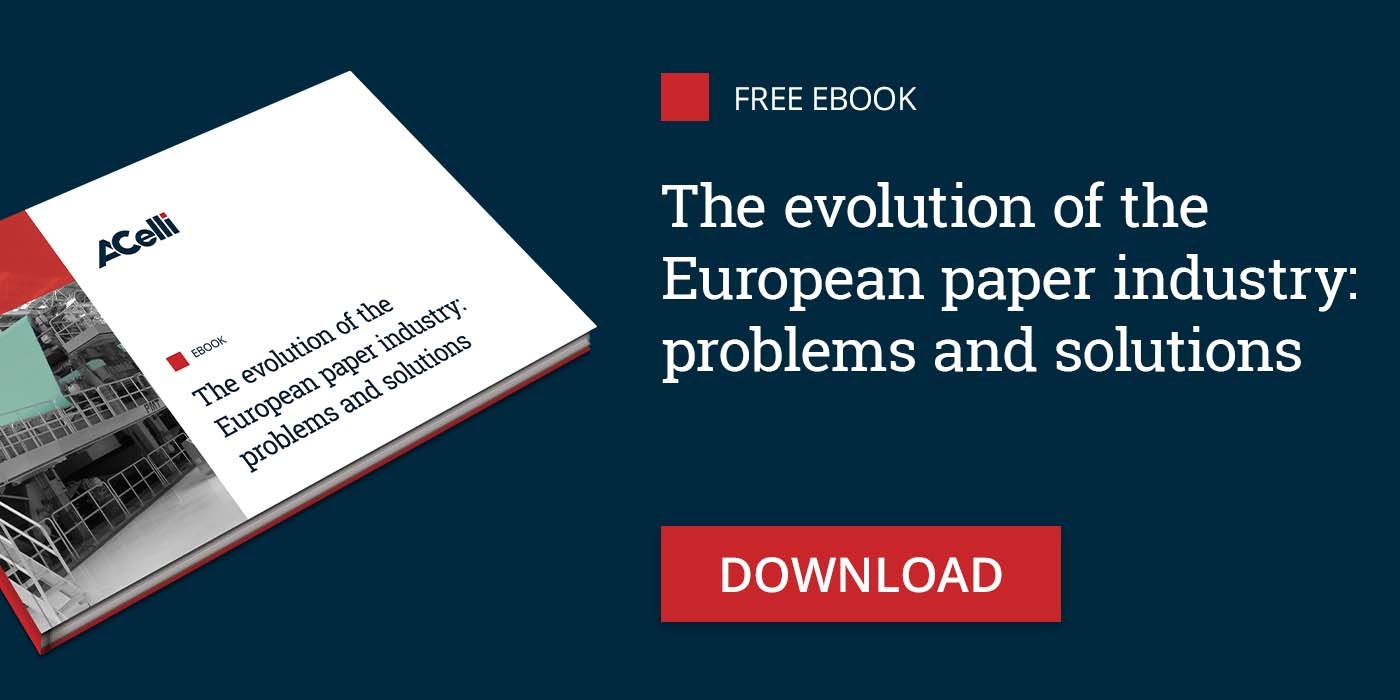The term paper has always been synonymous with communication, although evolutions in production technologies have made it possible to extend their use to other areas as well, from healthcare to packaging, to name a few. However, this development only took place starting from the 18th century, i.e. in a relatively recent era compared to the history of paper itself.
An adventure that begins in 200 BC.
Usually, and rightly so, we tend to associate the idea of the first sheets used for writing with the ones Egyptians made from papyrus as early as 2000 BC. Even in the form used today, paper has ancient roots: the first was found in China and dates back to 200 BC.
However, the birth of paper is officially traced back to 105 AD, when Ts'ai Lun, a dignitary at the court of a Chinese emperor, suggested creating it with tree bark, hemp clippings, rags and old fishing nets. Although it was developed with the tools available two thousand years ago, conceptually the process conceived by Ts'ai Lun was not very different from those in use today.
Paper production expands
Around 600 AD paper production was extended to Korea. The Koreans made several important advances, such as the use of a paper mold and the placement of wet paper on wooden boards for drying, allowing the molds to be reused more quickly. Koreans are also credited with two inventions that we still use today: the envelope and toilet paper.
The manufacture of paper then also reached Japan and, via the Silk Road, Central Asia. From there, paper production came to Baghdad, where in 794 AD the first water-powered paper mill was founded. Papermaking and other innovations continued to spread in the Islamic world, first in Damascus in Syria, then in Cairo in Egypt and finally in Europe, precisely in southern Spain, in the area then called al-Andalus.
Paper mills were created in Xativa, converting the Roman mills for pressing olives. Here wire paper molds were used for the first time, which created a smoother surface. In 1151, also in Spain, the water mill was introduced to produce the pulp without having to beat the fibers by hand or use a stone for grinding.
The first paper mill in Italy
Paper arrived in Italy in the 12th century and the first paper mill was founded in Fabriano. The Italian paper makers managed to further perfect the production of paper: through the use of hydraulic hammers they mechanized the milling of the rags, reducing the production times of the pulp and improving its quality.
Fabriano is also responsible for the creation of the watermark and the sizing of the paper with gelatin to make it water resistant. Until the fourteenth century the only paper mills in Europe to produce paper were the Italian ones.
Subsequently, other paper mills were born in France, Germany and, above all, in Holland, where a new machine to produce pulp was built in the 17th century. Such was its efficiency that it was also used on a large scale abroad and was simply called the "Dutch machine". Over the years, this machine has had several evolutions and its latest versions are still in use today in some paper mills.
The major evolutions of paper machines
Undoubtedly, the most important evolutions in paper production took place starting from the second half of the 1700s: some examples are the birth of paper without the signs of the laying (wove paper) and that of tissue paper.
At the beginning of the 1800s, a machine for the production of very long reels was patented, effectively giving way to industrial production. The arrival of steam engines around the middle of the century made it possible to double production. A sulphate-based process then made it possible to obtain a particularly robust paper which was called Kraft: this paper would transform the packaging sector.
The turning point that led to the democratization of the use of paper was, however, the use of wood pulp instead of rags. Production became mass produced, the price collapsed and paper became a commodity.
Today Italy is among the european top three producers
The Italian paper industry, mainly made up of numerous small and often family-run companies, plays a leading role on the European scene.
From the results for the year 2020 disclosed by Assocarta, Italy is in fact in first position in the production of paper for the hygienic industry (1.6 million tons) and third in the production of paper and cardboard for packaging (4 .8 million tons).
As regards the geographical location, in addition to the Fabriano area we find important paper districts in the province of Lucca (where 80% of the tissue paper and 40% of the corrugated cardboard in all of Italy is produced), in Valdinievole and in the province of Verona. Numerous other paper mills are also located in Trentino (in Riva del Garda), Liguria (in the provinces of Genoa and Savona), on Lake Como, in Sicily and in Sardinia.
From Beloit to PMT
A story in itself is the one that characterized the life of the US company Beloit, which has played a leading role in practically all the technological evolutions of paper production machines.
Beloit was founded in 1858 in Wisconsin and built machinery until the 1980s when it went out of business. In its more than 130 years of life, Beloit has registered countless patents.
The expertise acquired by Beloit in the field of paper production has been such that all the innovations introduced have provided an important contribution to the development of the industry on a global level. In the 1960s, this allowed Beloit to become the main reality in the industry in the United States and, with its licensees, also in the world.
In fact, he had signed a series of licenses for the construction of machinery with companies in Poland, India, Brazil and also in our country, with a company from Pinerolo (in the province of Turin) which from that moment assumed the name of Beloit Italia .
In 1999 the American parent company Beloit Corporation went bankrupt and Beloit Italia was acquired by an Italian investor. This allowed the new company, by now completely Italian, to continue its activity under the new name of PMT (acronym of Paper Machinery Technology).
From September 2020 PMT became part of the A.Celli Group, which was thus able to expand its offer by making available to its customers the precious know-how acquired by PMT in the industry of packaging paper, graphic paper and various types of specialty papers.

